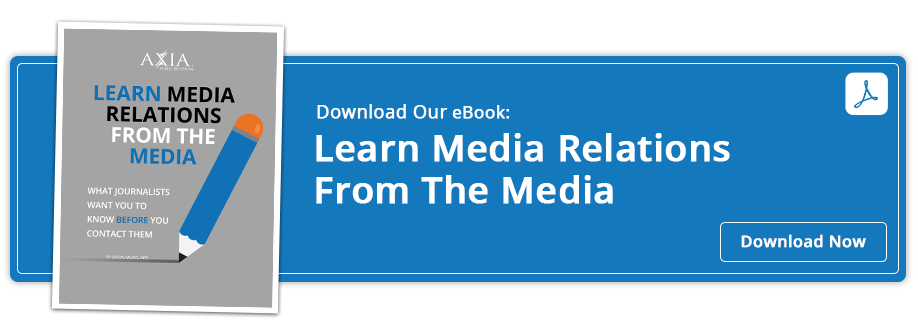 5 ways to be sure improper media relations doesn’t hurt your business
5 ways to be sure improper media relations doesn’t hurt your business
Practicing media relations isn’t for the faint of heart. Public relations professionals learn from experience – through networking and building relationships – the optimal way to earn the trust of reporters and editors. Too often though, a business has its employees reach out to the media and the results are unsuccessful and sometimes detrimental.
Without clear understanding of how to approach the media, you may tarnish your relationships or worse, your business gets blacklisted or lambasted across journalist networks, making any future PR efforts challenging. Should your company opt to tackle media relations without the guidance of PR pros, here’s some advice to avoid pitfalls:
- Know where and to whom you should send your news/pitch.
When emailing, calling or tweeting a reporter or editor, the rule is to be certain that (a) your pitch, tip or idea is appropriate for the outlet; (b) you are contacting the correct person; and (c) your story is defined and has merit. Media representatives receive hundreds of pitches per week, all while reporting on their assigned coverage area. Out of all the pitches they receive, the press can only report on four to five per week. Therefore, properly crafted and targeted pitches will get attention and off-topic, inappropriate or bad pitches are deleted.
- Do not spam or be a pest.
When you’re excited about something, you generally want others to be excited as well. Unfortunately, being overeager can hobble you when pitching the media. Reporters have little time to juggle numerous calls or emails from the same company about the same tip or story pitch. Once you’ve made contact, let your effort marinate and check back in four to seven days if you haven’t received a response. If there doesn’t seem to be much interest after follow-up, the story may not be ripe for the reporter. Spamming a reporter will only lead to a bad taste.
- Offer the whole package with your great story.
If you’ve put together a pitch containing mass appeal, timeliness, sources and supportive data, you have optimal conditions for an irresistible pitch. Don’t simply deliver the sizzle without the steak. Provide the whole meal (sources, analyst data, customer contacts, infographics, photos, video) and journalists will likely consume it with gratitude.
- Editorial is not “pay for play.”
For those not as well-versed on media relations, it’s imperative to understand the line between editorial and advertising. Many believe that by spending money in advertising, editorial teams become beholden. Not true. If that’s what you seek, let us refer you to “advertorials” (advertisement you pay for, but have greater control over in the way of copy and graphics). Pure editorial is fact-based writing.
- Professional courtesy goes a long way.
You’ve no doubt heard about the contentious relationship that exists between President Trump and the White House press corps and how that negativity has colored perceptions and disadvantaged the White House. “The principles and purpose of journalism,” write Bill Kovach and Tom Rosenstiel in The Elements of Journalism, “are defined by the function news plays in the lives of people.” News keeps us informed so we make the best possible decisions. Therefore, to effectively do their jobs, reporters depend on sources and analysts. Being prepared is a professional courtesy. When you have all supportive content available (customers or vendors with whom reporters can speak, financial information, data or analytics supporting your story, etc.), you provide the media with all they need to make their job as easy as possible.
Understanding best practices in media relations will further your efforts to get stories placed much faster than making cold calls. Axia Public Relations interviewed members of the media and compiled the information in our downloadable guide Learn Media Relations from the Media. Give it a try or contact us to discuss how we can do the heavy lifting for you.

 Wendy Bulawa Agudelo has nearly 20 years of experience in technology, business, consumer and nonprofit public relations. She serves on the Massachusetts Down Syndrome Congress PR Task Force and is a culinary enthusiast and champion for the special needs community. Wendy has worked for Axia Public Relations since September 2014. Learn more about Wendy Bulawa Agudelo. Connect with Axia on Twitter @axiapr or tell us what you think in the comments below.
Wendy Bulawa Agudelo has nearly 20 years of experience in technology, business, consumer and nonprofit public relations. She serves on the Massachusetts Down Syndrome Congress PR Task Force and is a culinary enthusiast and champion for the special needs community. Wendy has worked for Axia Public Relations since September 2014. Learn more about Wendy Bulawa Agudelo. Connect with Axia on Twitter @axiapr or tell us what you think in the comments below.
Featured image credit: 123rf.com
Topics: media relations, public relations


Comment on This Article